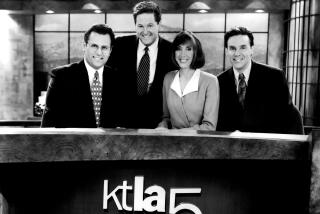‘Breslin and Hamill: Deadline Artists’ revisits the days when newspaper columnists were kings
This week marked a grim chapter in the ongoing saga of American journalism, with sweeping layoffs at Gannett newspapers and heralded digital outlets HuffPost and BuzzFeed.
A documentary arriving Monday on HBO, “Breslin and Hamill: Deadline Artists” revisits a bygone era when print journalism was thriving and Jimmy Breslin and Pete Hamill, two blustery Irish Catholics from New York’s outer boroughs, became national celebrities by chronicling a city in turmoil.
“It was one of the golden ages of American journalism, I think, in which the virtues of the local were as important as the bigger picture of the universe,” said Hamill by phone from his home in Prospect Heights, Brooklyn. As the sentences spill out of his mouth fully formed, it’s easy to see how Hamill was able, for decades, to churn out column after artful column on deadline for the New York Post, the New York Daily News and the Village Voice.
Through archival footage, passages from Breslin and Hamill’s most celebrated columns and interviews with both men as well as peers like Tom Wolfe, Gay Talese and Gloria Steinem, “Breslin and Hamill” harks back to a more raucous period in journalism, when newsrooms were loud and so were the men — it was mostly men — who led them.
“There was a brawling quality to American journalism, a great sense of fun in those newspapers, that is gone,” said Jonathan Alter, who directed the film with Steve McCarthy and John Block.
“Breslin and Hamill” traces the arc of their careers via a half-century of major news events, from the assassination of John F. Kennedy to the terrorist attacks of 9/11. There is an emphasis on Breslin and Hamill’s often provocative coverage of race and class throughout New York’s gritty past, including the notorious Central Park jogger case — yes, Donald Trump makes an appearance — and the Crown Heights riots, during which Breslin was attacked.
The documentary depicts a period before the news business was the elite, white-collar bastion it has, by some accounts, become. Breslin and Hamill were raised in working-class families in Queens and Brooklyn, respectively. Neither graduated from college; Hamill dropped out of high school at 16 to help support his six younger siblings.
A well-regarded journalist and author who worked at Newsweek for decades, Alter first encountered Breslin in 1986 when he was profiling the bombastic columnist. “I asked hard questions of a few stories he had written. And he said, ‘Alter, you [mess] with me, I’ll [mess] you good,’” Alter recalled by phone, using the saltier language Breslin was known for.
Several years ago, Alter learned that Breslin was ailing and had the idea to sit down with him for in-depth conversations about his life, career and the newspaper business. The directors soon added Hamill to the project and interviewed them together for roughly 10 hours.
While the two men differed in both tone and appearance — Breslin was brash and disheveled with a thick Queens accent, Hamill handsome and honey-voiced with a lyrical prose style — they both brought empathy for the poor and the marginalized, informed by their hard-scrabble roots, and a deep understanding of the immigrant experience to their writing.
“We were explaining the newcomers to the people who were here already, and we were explaining New York to the newcomers,” said Hamill. “The immigrant mentality of ‘this is America, it’s better than what we left’ was with us, and I think created a kind of a permanent optimism — an optimism that the world is going to be better tomorrow, or least the day after tomorrow.”
We were explaining the newcomers to the people who were here already, and we were explaining New York to the newcomers.
— Pete Hamill
Decades before major newspapers would send reporters to Rust Belt diners to interview Trump voters, they were attuned to the mood of the white working class. “Any politician who leaves that white man out of the political equation, does so at very large risk,” Hamill wrote in a prescient column for New York magazine in 1969.
“Their understanding of white working-class resentments is one of many things about their story that resonates powerfully in the present,” Alter said. And while Breslin and Hamill are the focus of the film, they also function as stand-ins for a breed of local columnist that is going extinct. “Every city used to have these columnists who really knew the streets of their city.”
The columnists had a Forrest Gump-like tendency to be present at moments of huge historical import — for being “everywhere for a half-century,” as Alter put it. They were both inches away from Bobby Kennedy when he was shot by Sirhan Sirhan, and Breslin rode in the ambulance with the mortally wounded senator.
But Breslin in particular also knew how to find the unexpected story, famously interviewing the African American worker who dug John F. Kennedy’s grave at Arlington Cemetery and palling around with colorful underworld figures at his local watering hole. Eschewing the title “journalist” as pretentious, he preferred to be known simply as a reporter and lived by the credo “chase news.”
“Just on the matter of craft, what Jimmy brought to the writing of columns were the tools of the sportswriter. You had to go to the loser’s dressing room where there was a better story than the winner’s dressing room,” said Hamill, who was hired by the Post to write a column that, like Breslin’s, appealed to working-class readers and overlapped with him at the Daily News in the 1970s. “It wasn’t about reading what’s on the AP wire and then riffing on it. It was about getting out of the city room and into the street and into the third floor left and talking to the widow of the slain gang leader. Jimmy established that.”
They also tended to become the news themselves, their prominence turning them into celebrities as well as targets. Breslin ran for mayor with Norman Mailer (it didn’t go well) and appeared in beer commercials. Hamill was on Nixon’s enemies list, and he romanced Shirley MacLaine and Jackie Onassis.
“Can you imagine a print journalist dating the most famous woman in the world now? These were giants roaming the earth,” said Alter.
But the filmmakers didn’t set out to go on a simplistic “nostalgia trip,” Alter said.
Instead the documentary explores the complexities of both men, especially Breslin, whose life was marked by profound loss. Though he wrote with deep empathy about AIDS victims at a time of rampant homophobia, a few years later he was suspended from New York Newsday after using a racist slur to disparage an Asian American female journalist who’d criticized a column as sexist— the result, said Alter, not of deep-seated bigotry but of Breslin’s “temporary egotism and temper.”
“Nowadays they definitely would have fired him. I think it’s worth pondering: He would not have done well with the human resources department in 2019,” Alter added.
Though he’s been slowed by “two busted hips” and “can’t go to a tenement and walk up the seven flights anymore,” Hamill is writing a book about his move back to Brooklyn after 30 years in Tribeca in lower Manhattan.
And while he’s sad about the current state of the industry, Hamill, the author of novels including “Forever” and the memoirs “Downtown: My Manhattan” and “A Drinking Life,” said he remains grateful for the career he has had.
“Newspapers gave me my life. I didn’t go to journalism school or anything. But I had a great number of very good people, men and women, who instructed me, took pity on me and said, ‘This poor dope.’ And they gave me a life that was full and rich, with a minimum of regrets.
“And at 83 I can sit back and say I didn’t add to the lousiness of the world and I helped people who got knocked down to get up and that was something worth doing in the only life I’ll probably ever have.”
See the most-read stories in Entertainment this hour »
‘Breslin and Hamill: Deadline Artists’
Where: HBO
When: 8 p.m. Monday
Rating: TV-MA (may be unsuitable for children under 17)
Follow me @MeredithBlake
More to Read
The complete guide to home viewing
Get Screen Gab for everything about the TV shows and streaming movies everyone’s talking about.
You may occasionally receive promotional content from the Los Angeles Times.






